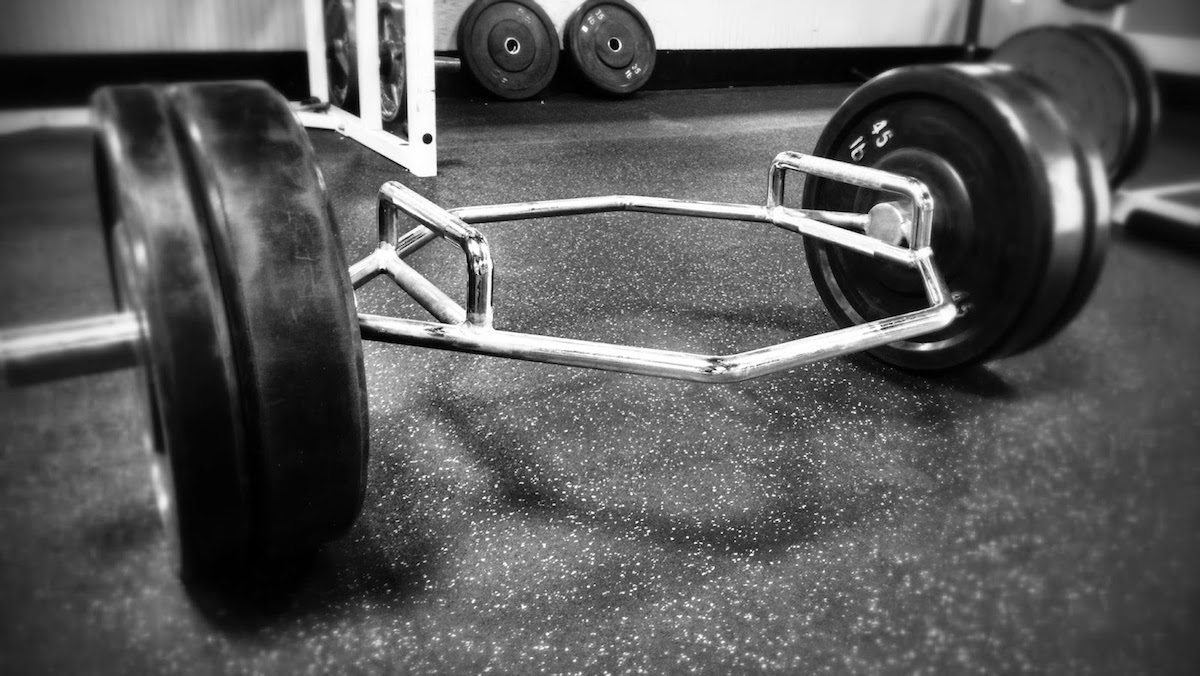The hex bar has been a popular tool for deadlifts for a number of years now. While the hex bar isn’t specific to what a powerlifter does in competition, it might have some advantages for an athlete. First, in theory it would not require as much technique as a straight bar deadlift. Second, it’s theorized to take some of the stress off the lower back. Third, it’s going to save an athlete’s shins as the bar isn’t going to be dragged up them.
Camara et al, in the latest issue of the Journal of Strength and Conditioning Research, di da study comparing the muscle recruitment and power output values of the straight bar deadlift and the hex bar deadlift. The authors selected college-aged students and studied them over several sessions. In the first few sessions the subjects maxed out on both the straight bar and the hex deadlift. On the other sessions they did 3 reps each at 65% and 85% of 1-RM on both the straight bar and the hex bar.
During the reps at 65% and 85%, subjects had EMG values recorded of the vastus lateralis, biceps femoris, and erector spinae. In addition, subjects lifted on a force platform and had a velocity transducer attached to the barbell.
Results:
In terms of muscle recruitment:
- The vastus lateralis has an EMG amplitude of almost 25% greater during the concentric phase of the hex deadlift and almost 58% greater during the eccentric phase.
- The biceps femoris has an EMG amplitude of almost 15% lower during the concentric phase of the hex deadlift and almost 10% lower during the eccentric phase.
- The erector spinae has an EMG amplitude of a little more than 10% lower during the concentric phase of the hex deadlift and almost 20% lower during the eccentric phase.
With regards to power measures:
- The hex deadlift has peak ground reaction forces that are almost 2% greater than the straight bar deadlift.
- The hex deadlift has peak power values of almost 15% greater than the straight bar deadlift.
- The hex deadlift has peak velocity values of a little over 10% greater than the straight bar deadlift.
The results of this study seem to suggest that the hex bar deadlift is a more quadriceps-dominated movement, whereas the straight bar deadlift is a more hamstring/lower back-dominated movement.
In addition, the hex barbell seems to produce greater peak ground reaction forces, power, and velocity than the straight bar. The authors think there are a number of reasons for this. First, the quadriceps-dominated nature of the movement might contribute to this. Second, the authors report other studies that suggest that the load is actually closer to the body and is displaced less during the lift with the hex barbell than with the straight bar deadlift.
It’s an interesting study and I really appreciate the time the authors took on this one. I think there are a few take home messages here. First, the hex barbell cannot be dismissed just because it’s not how powerlifters perform the exercise. Second, both variations have a place depending on what you want to train. For example, if we’re looking for hamstring and lower back development then we want the straight bar version. Finally, if your focus is on power and velocity then you’re probably going to want to use the hex bar variation.
Camara, K.D., Coburn, J.W., Dunnick, D.D., Brown, L.E., Galpin, A.J., and Costa, P.B. (2016). An examination of muscle activation and power characteristics while performing the deadlift exercise with straight and hexagonal barbells. Journal of Strength and Conditioning Research, 30(5): 1183-1188.




